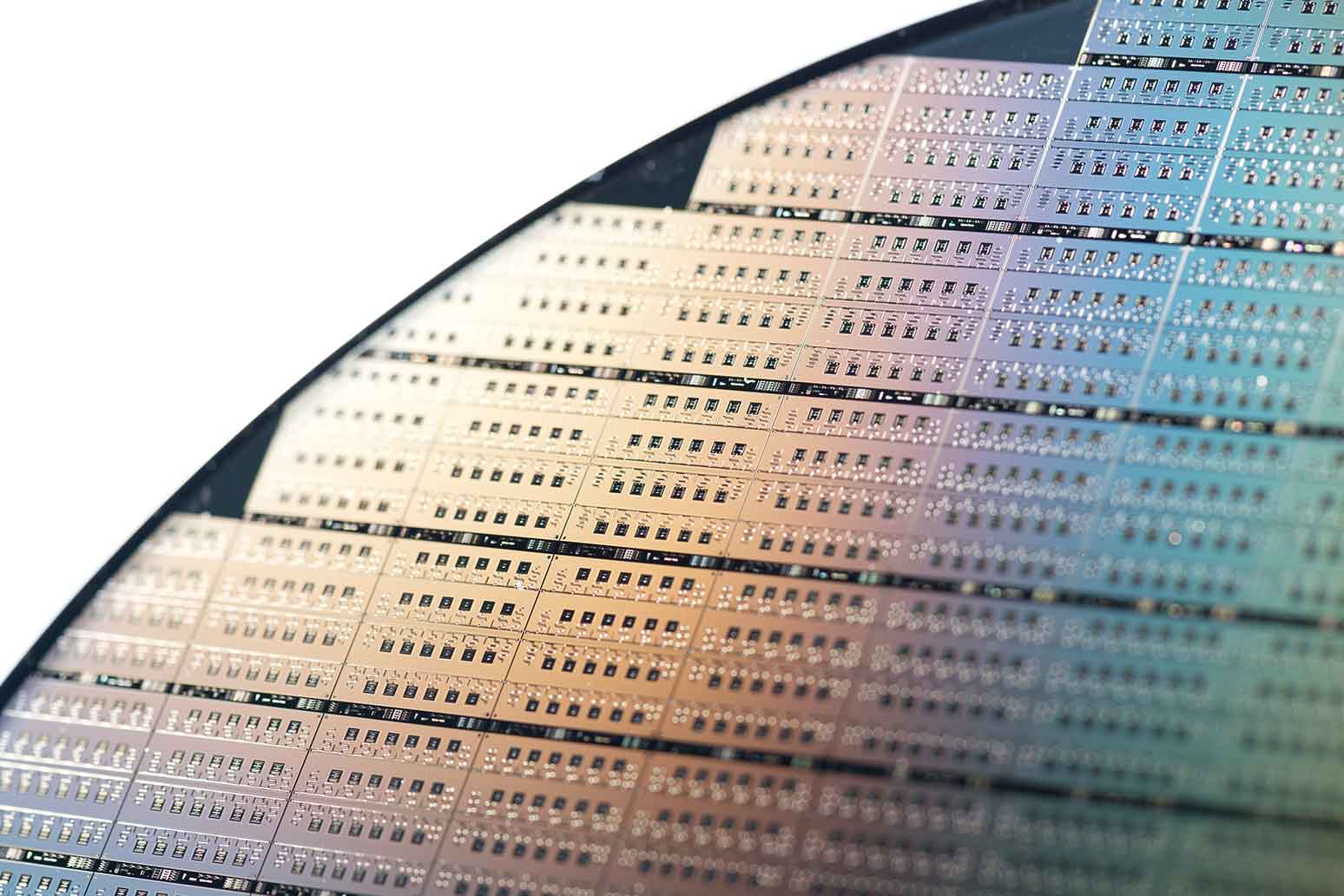Press Briefing
Unlocking Quantum Potential: Towards Scalable superconducting Quantum Hardware
The development and characterization of scalable quantum hardware is a key factor for bringing quantum computing to real life applications. Researchers at Fraunhofer EMFT are working on innovative approaches to push this development. At this year´s World of Quantum, taking place from June 24-26 in Munich, our research team will present several demonstrators from its quantum technology research program, which showcase the seamless integration of scientific excellence and engineering expertise.

One demonstrator will be a 200 mm silicon wafer featuring qubit chips fabricated in the pilot line of Fraunhofer EMFT. The layout includes a qubit test chip equipped with four fixed-frequency qubits operating at 4 - 5 GHz, alongside coplanar waveguide resonators. The current performance metrics indicate median relaxation times T1 around 100 μs, with some devices reaching T1 values of approximately 200 μs - the highest so far reported energy relaxation times worldwide for superconducting qubits fabricated by subtractive, industry-grade methods on large wafers! Long-term monitoring over 16 hours has revealed consistently good performance, underscoring the reliability of the technology.
Flexible Solutions for Complex Challenges
Simplifying installations and saving space are currently key challenges in superconducting quantum system design. The ability to minimize physical footprints while maintaining performance is vital as quantum systems become increasingly complex.
At the World of Quantum, we are introducing a technology demonstrator for flexible superconducting multichannel interconnects, designed for control and data signal transmission between millikelvin (mK) and 4 K stages. Our solution provides high signal density, low active heat dissipation, and limited passive heat transfer, making it ideal for cryogenic applications. The interconnects feature extra-long lengths ranging from centimeters to meters and provide an alternative method for connecting high-density waveguides to printed circuit boards (PCBs).
Advanced Flip-Chip Technology with Indium Micro-Bumps
Advanced flip-chip technology is crucial for quantum computing for several reasons. For example, it provides routing of signals to control and readout qubits and enhances qubit performance by reducing crosstalk, which is essential for reliable quantum operations. Moreover, this technology improves thermal management, as micro-bumps facilitate efficient heat transfer. We are presenting 3D assemblies designed and fabricated on 200 mm silicon wafers for the advancement of flip-chip technology. The test structure includes a qubit chip with 24 floating qubits and a carrier chip encompassing silicon pillars covered with indium, which act as micro-bumps in the flip-chip assembly.
Looking Ahead
Fraunhofer EMFT continues its research efforts for scaling quantum computers, especially in developing industry-grade fabrication techniques of quantum hardware. With our pilot line, we aim to establish a foundry like processing of small-volume batches and prototypes for quantum technology applications, e.g. QPUs, QT-devices, QT-sensing applications, customized QT-processing.
Visit Us
Learn more about these advancements and visit our booth A1.222 at the Munich Quantum Valley space! Take the opportunity to discuss with our experts and explore the cutting-edge developments that pave the way for real life quantum applications.
Download Press Briefing
Last modified:
